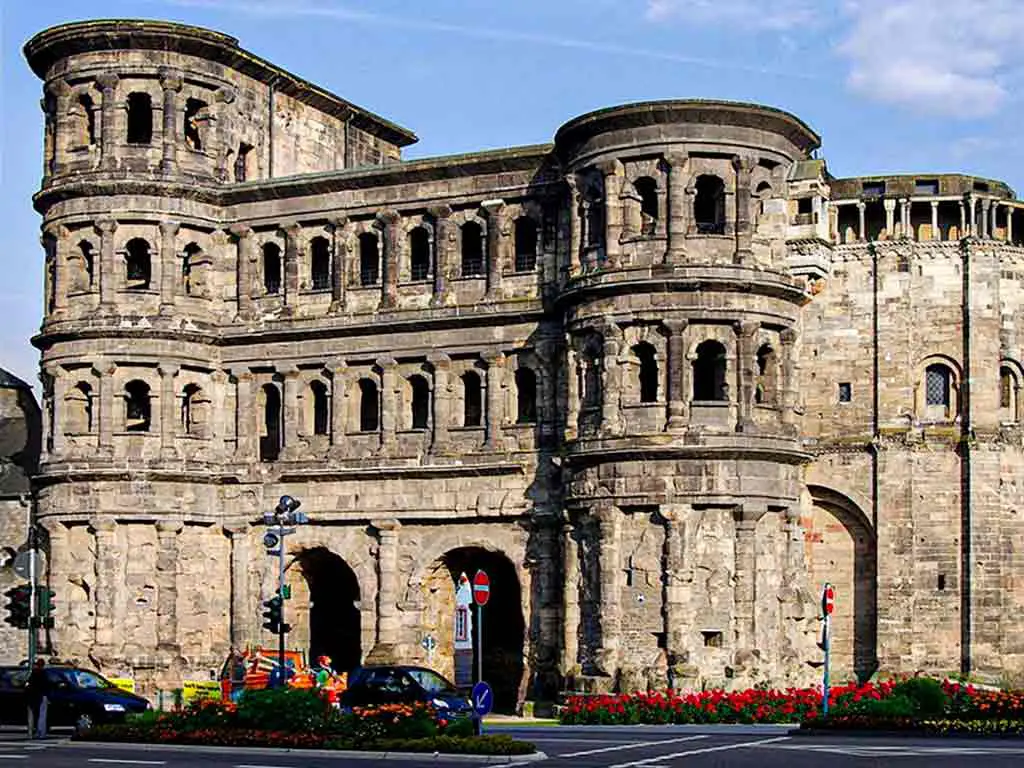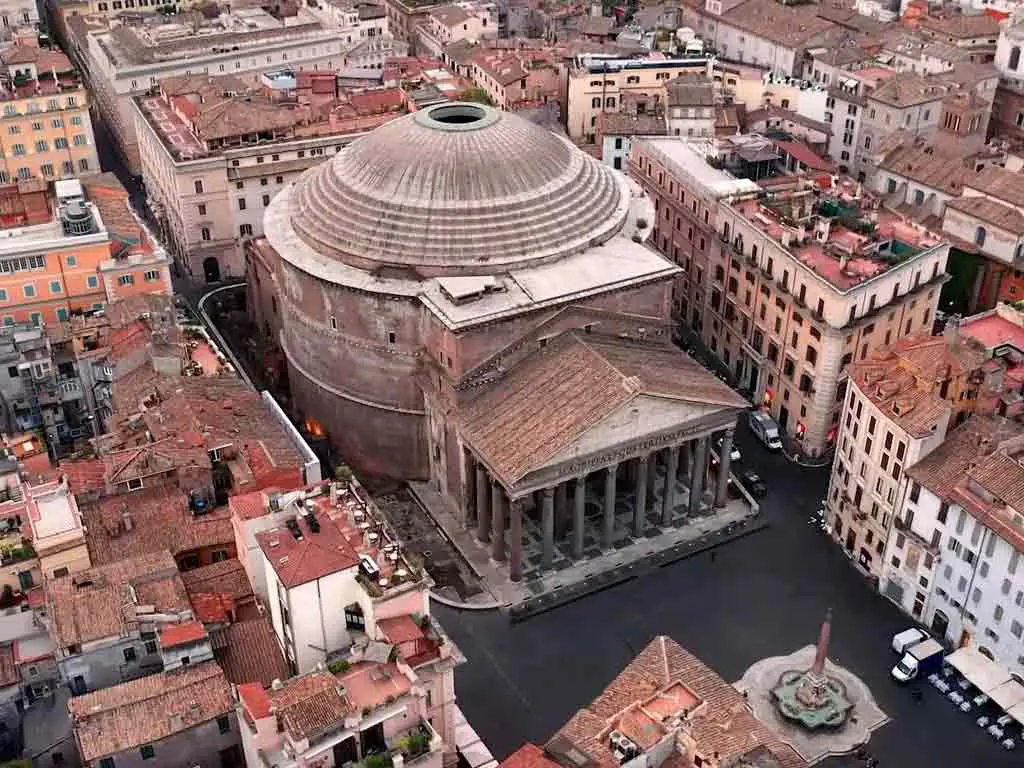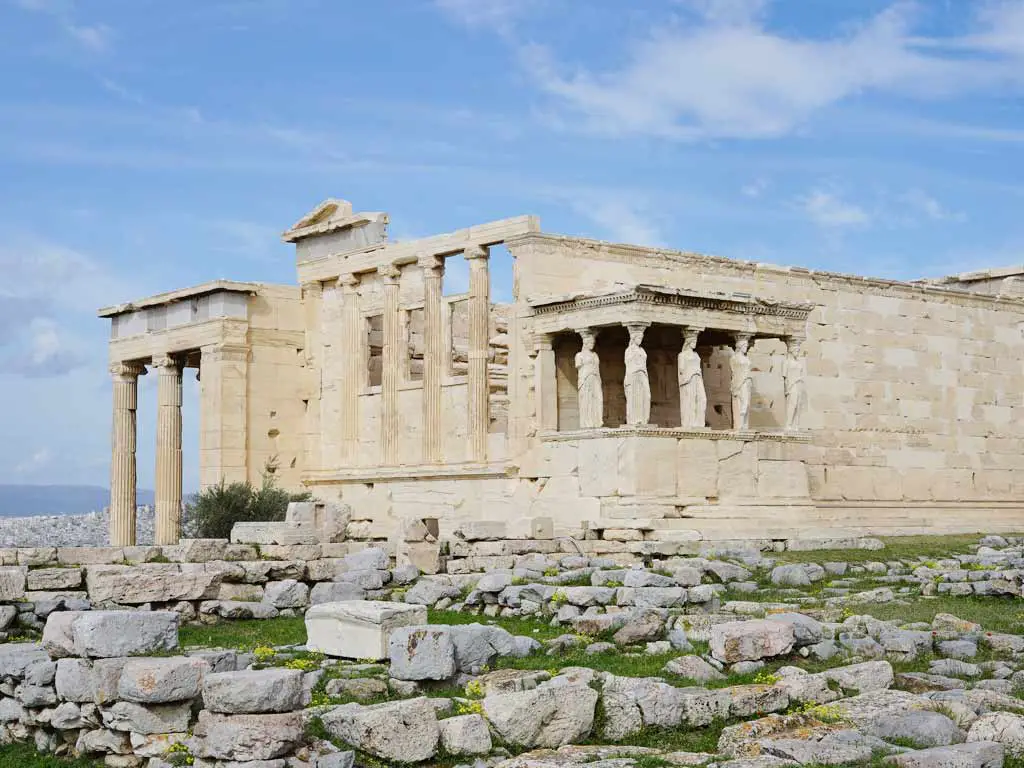Architecture is not merely a collection of structures; it is a profound influencer that shapes the cultural landscape of a society.
The built environment serves as a canvas on which a community’s values, history, and identity are vividly portrayed.
Through distinctive styles, symbolic elements, and innovative designs, architecture becomes a visible expression of cultural identity and continuity.
Historic buildings stand as living testaments to the past, while contemporary structures reflect a society’s adaptability and forward-thinking mindset.
Social spaces and communal areas, intricately designed, foster a sense of community.
In this intricate interplay between form and function, architecture becomes a dynamic force contributing to the rich tapestry of cultural expression and societal evolution.

What Is Cultural Landscape in Human Geography?
In human geography, a cultural landscape refers to the visible and tangible outcome of the interaction between human societies and their natural environments.
It encompasses the physical manifestations of human activity, such as buildings, monuments, and infrastructure, which reflect the cultural values, practices, and historical experiences of a community.
Cultural landscapes are dynamic, evolving as societies adapt to changing conditions.
They provide insights into how people shape, perceive, and interact with their surroundings, creating a distinctive visual and spatial expression of the complex relationship between culture and the environment in a given geographical area.
How Does Architecture Influence Cultural Landscape?
Architecture, as an artistic and practical endeavor, plays a pivotal role in expressing the cultural identity of a community.
It transcends mere functionality to become a visual language that communicates the essence of a society.
The use of specific architectural styles, choice of materials, and incorporation of cultural symbols all contribute to a narrative that reflects the unique traditions, beliefs, and values of a community.
Whether it’s the intricate detailing of a temple, the simplicity of a traditional village dwelling, or the grandeur of a palace, each architectural manifestation becomes a brushstroke on the canvas of cultural expression.
Historical Continuity

Architectural structures are not frozen in time; they are living witnesses to the historical continuum of a society.
Historic buildings, with their enduring facades and resilient structures, serve as tangible links to the past.
They encapsulate the stories of the people who lived and built them, offering a palpable connection to bygone eras.
Preservation and adaptive reuse of historical buildings further emphasize the importance of architectural heritage in maintaining a sense of continuity, providing a bridge between the past and the present.
Cultural Symbolism
Architectural symbolism is a language that speaks volumes about the cultural values and aspirations of a society.
From the spires of cathedrals to the minarets of mosques, each architectural element is pregnant with meaning.
Public buildings, especially those housing government institutions, often incorporate design features that symbolize national ideals or historical events.
The deliberate use of symbols in architecture transforms the built environment into a medium for conveying shared cultural narratives.
Sense of Place
Beyond the utilitarian aspect of shelter, architecture molds the physical environment into spaces with character and identity.
The layout of streets, the design of public squares, and the aesthetic choices in building facades collectively contribute to a unique sense of place.
Residents don’t merely inhabit spaces; they emotionally invest in the built environment.
The architecture becomes a defining factor in the collective consciousness, influencing how individuals perceive their community and fostering a shared sense of belonging.
Social Interaction and Community Spaces
Architecture is not confined to bricks and mortar; it extends into the design of communal spaces that shape social interactions.
Town squares, marketplaces, and community centers are not only functional spaces but also cultural hubs.
The architectural planning of these spaces influences how people come together, fostering a sense of community.
In well-designed public spaces, architecture becomes a facilitator of social cohesion, encouraging shared experiences and connections among residents.
Innovation and Modernization
Contemporary architecture stands at the forefront of societal progress. Modern buildings, with their innovative designs and sustainable features, embody a community’s adaptability and forward-thinking mindset.
The architectural landscape of a city becomes a visual representation of its commitment to embracing new ideas, technologies, and approaches to urban living.
It reflects a society’s response to the challenges and opportunities of the present, contributing to a narrative of continuous evolution.
Cultural Exchange and Fusion
Architectural styles are not static; they evolve through cultural exchanges and historical interactions.
The fusion of different architectural traditions over time creates a unique built environment that mirrors the interconnectedness and diversity of cultures.
Cities, as melting pots of ideas and influences, showcase architectural amalgamations that speak to the dynamic nature of cultural exchange.
The resulting structures become tangible expressions of the shared history and interwoven destinies of diverse communities.
How Does Architecture Impact Society?

Architecture wields a profound influence on society, extending far beyond the physical structures it creates.
Its impact resonates through cultural, social, and economic dimensions, shaping the way people live, interact, and perceive their environment.
Cultural Identity and Expression
Architecture serves as a powerful medium for expressing and reinforcing cultural identity.
Whether through the preservation of historical architectural styles or the creation of contemporary landmarks, the built environment becomes a canvas for cultural narratives.
Architectural choices, from the ornate detailing of religious structures to the functional minimalism of modern buildings, symbolize and communicate the values, beliefs, and aspirations of a society.
Social Interaction and Well-being
The design of spaces significantly influences social dynamics and individual well-being.
Thoughtfully designed public spaces, parks, and recreational areas encourage social interaction and community engagement.
Furthermore, architectural considerations in housing and workplace design impact the quality of life for individuals, affecting factors such as comfort, accessibility, and overall satisfaction.
Economic Development
Architectural projects contribute to economic development by generating employment and attracting investment.
Large-scale infrastructure projects, urban developments, and commercial complexes not only create jobs but also stimulate local economies.
Architectural innovation can enhance a city’s appeal, drawing businesses, residents, and tourists, thus contributing to sustained economic growth.
Environmental Sustainability
In response to environmental challenges, architecture plays a crucial role in promoting sustainability.
Green building practices, energy-efficient designs, and the use of eco-friendly materials reduce the environmental impact of construction.
Sustainable architecture aligns with broader efforts to address climate change and promotes a more responsible approach to resource utilization.
Functionality and Efficiency
The functional aspect of architecture goes beyond aesthetics, influencing how spaces are used and experienced.
Well-designed buildings optimize functionality, improving efficiency in various settings.
From efficient office layouts that enhance productivity to well-planned residential spaces that prioritize comfort and livability, architectural decisions directly impact the daily lives of individuals.
Urban Planning and Mobility
Architectural decisions are integral to urban planning, influencing the layout and connectivity of cities.
Thoughtful urban design can reduce congestion, promote walkability, and enhance public transportation systems.
The integration of architectural principles into urban planning contributes to the creation of sustainable, accessible, and aesthetically pleasing urban environments.
Cultural Exchange and Innovation
Architectural innovation serves as a reflection of societal progress and cultural exchange.
Modern designs often push the boundaries of creativity and technology, becoming iconic symbols of innovation.
Architectural marvels, from cutting-edge skyscrapers to innovative public spaces, inspire a sense of pride, creativity, and forward-thinking within a society.
Heritage Preservation
Architectural conservation is crucial for preserving historical and cultural heritage. Restoration projects not only maintain the physical integrity of historical structures but also ensure a tangible connection to the past.
By preserving landmarks and architectural traditions, societies can appreciate their roots while embracing the present, fostering a sense of continuity and cultural pride.
What Architecture Is Common to the European Cultural Landscape?

The European cultural landscape is a tapestry woven with diverse architectural styles that span centuries and reflect the rich history and cultural heritage of the continent.
Several architectural styles have left an indelible mark on Europe, contributing to its unique and varied built environment.
Classical Architecture
Classical architecture, deeply rooted in ancient Greek and Roman traditions, manifests in Europe through structures embodying balance, proportion, and grace.
Temples, theaters, and public buildings feature iconic columns—Doric, Ionic, and Corinthian—that have become enduring symbols of classical design.
The Acropolis in Athens and the Roman Forum exemplify the grandeur and permanence associated with this architectural style, influencing European structures across various epochs.
Gothic Architecture
Gothic architecture, prevalent from the 12th to the 16th century, evokes a sense of verticality and spirituality.
Characterized by pointed arches, ribbed vaults, and flying buttresses, Gothic cathedrals stand as marvels of engineering and artistic expression.
The Notre Dame Cathedral in Paris and the Cologne Cathedral in Germany are quintessential examples, showcasing the intricate detailing and towering spires that define Gothic aesthetics.
Renaissance Architecture
The Renaissance marked a return to classical ideals, and European architects sought inspiration from ancient Greece and Rome.
Renaissance buildings feature harmonious proportions, domes, and a focus on mathematical precision.
The Florence Cathedral, with Brunelleschi’s dome, and St. Peter’s Basilica, designed by Michelangelo, exemplify the revival of classical aesthetics during this transformative period.
Baroque Architecture
The Baroque era, spanning the 17th and 18th centuries, introduced flamboyance and theatricality to European architecture.
Elaborate ornamentation, dynamic forms, and grandeur characterize Baroque structures.
St. Peter’s Square in Rome, designed by Gian Lorenzo Bernini, and the Palace of Versailles in France showcase the opulence and exuberance associated with Baroque design.
Neoclassical Architecture
Reacting against the excesses of Baroque and Rococo, Neoclassical architecture emerged in the 18th century.
Embracing simplicity and classical elements, Neoclassical buildings often feature columns, symmetry, and clean lines.
The British Museum in London, designed by Robert Smirke, and the Brandenburg Gate in Berlin illustrate the return to classical principles during this Enlightenment-inspired era.
Romantic and Victorian Architecture
The 19th century witnessed a shift towards Romantic and Victorian architectural styles.
Romantic structures embraced picturesque designs, emphasizing the connection to nature, while Victorian architecture featured ornate details and eclectic influences.
The Eiffel Tower in Paris, an iconic symbol of Romantic design, and the Houses of Parliament in London, embodying Victorian Gothic Revival, exemplify the diversity of this period.
Art Nouveau
Art Nouveau, flourishing in the late 19th and early 20th centuries, embraced organic forms, intricate details, and decorative flourishes.
Characterized by flowing lines and nature-inspired motifs, Art Nouveau structures exhibit a unique blend of art and architecture.
Casa Batlló in Barcelona, designed by Antoni Gaudí, and the Hôtel Tassel in Brussels, by Victor Horta, showcase the expressive and ornamental qualities of this movement.
Modernist and Contemporary Architecture
The 20th century witnessed the rise of Modernist architecture, emphasizing functionality, simplicity, and the use of new materials.
Bauhaus principles and the International Style influenced iconic structures such as the Bauhaus School in Germany and the Villa Savoye in France.
Contemporary European architecture continues to evolve, embracing innovation, sustainability, and a synthesis of cultural influences in iconic landmarks like the Shard in London and the City of Arts and Sciences in Valencia.
How Does Culture Influence Architecture?

Culture and architecture share a symbiotic relationship, with each significantly influencing the other.
The built environment, shaped by cultural values, traditions, and societal norms, becomes a tangible expression of a community’s identity.
Here’s an exploration of how culture influences architecture:
Cultural Identity and Aesthetics
Culture serves as a primary determinant of architectural aesthetics. Different societies have unique artistic traditions, symbolic meanings, and preferences that influence the design of buildings.
Architectural styles often reflect cultural identities, whether through the use of specific materials, colors, or design elements.
For example, the vibrant colors and intricate patterns of Islamic architecture or the minimalism inherent in Japanese design are manifestations of cultural aesthetics.
Symbolism and Meaning
Cultural symbols and meanings are embedded in architectural design. Buildings often carry religious, political, or social significance that reflects the values of a community.
Temples, churches, and mosques are not only places of worship but also symbols of spiritual identity.
Similarly, government buildings or monuments may embody national values or commemorate historical events, contributing to the symbolic language of architecture within a specific culture.
Traditional Building Techniques
Cultural practices influence the choice of materials and building techniques. Indigenous cultures often employ traditional construction methods that have been passed down through generations.
Whether it’s adobe construction in Southwestern Native American architecture or thatched roof houses in rural Africa, these methods are rooted in cultural practices, environmental considerations, and historical knowledge.
Climate and Geography
Cultural adaptation to climate and geography plays a pivotal role in architectural styles.
Traditional dwellings in hot climates may feature open courtyards and natural ventilation, while those in cold climates prioritize insulation and compact designs.
The cultural response to environmental conditions becomes embedded in the architectural fabric of a region.
Social Structures and Functions
Cultural values shape social structures, and this, in turn, influences architectural design.
The layout of homes, the design of communal spaces, and the organization of cities are all influenced by cultural norms related to privacy, community, and social interactions.
For instance, the emphasis on communal spaces in Mediterranean cultures or the compartmentalized living spaces in many East Asian cultures reflects societal values.
Rituals and Traditions
Architectural spaces often accommodate cultural rituals and traditions. Religious buildings, for example, are designed to facilitate specific ceremonies, while homes may include spaces for cultural practices and family traditions.
The layout and design of these spaces contribute to the preservation and continuation of cultural rituals.
Urban Planning and Cultural Landscapes
Urban planning reflects cultural priorities and values. The design of cities, public spaces, and infrastructure is influenced by cultural considerations.
Whether it’s the layout of medieval European cities or the urban planning principles of ancient Chinese cities, cultural norms regarding community interaction, trade, and governance have left an enduring mark on urban landscapes.
Modern Interpretations and Globalization
In contemporary times, cultural influences on architecture continue to evolve. Globalization has led to a blending of cultural styles, with architects incorporating diverse influences into their designs.
Modern architecture often seeks a balance between cultural preservation and innovation, resulting in buildings that reflect a fusion of global and local influences.
Cultural Landscape Examples
Cultural landscapes encompass diverse and visually captivating examples around the world, reflecting the intricate interplay between human societies and their environments.
These landscapes tell stories of historical, religious, and social significance, offering a tangible link to the past and shaping the identity of communities.
Here are a few notable examples:
Kyoto, Japan
Kyoto stands as a living testament to traditional Japanese culture and architecture. With its historic temples, shrines, and meticulously designed gardens, Kyoto’s cultural landscape embodies the essence of Japanese aesthetics.
The Kinkaku-ji (Golden Pavilion) and Fushimi Inari Taisha, with its iconic torii gate pathway, are emblematic of Kyoto’s rich cultural heritage.
Machu Picchu, Peru
Nestled in the Andes Mountains, Machu Picchu is an ancient Incan citadel that exemplifies the fusion of architecture with natural surroundings.
This UNESCO World Heritage Site showcases advanced engineering, terraced agricultural fields, and sacred structures.
Machu Picchu is not just a marvel of construction but also a cultural landscape that reflects the spiritual beliefs of the Inca civilization.
Santorini, Greece
The Cycladic architecture of Santorini, characterized by white-washed buildings with blue domes, is an iconic cultural landscape.
Perched on the cliffs overlooking the Aegean Sea, the villages of Oia and Fira present a harmonious blend of architectural beauty and natural splendor. The visual appeal of Santorini has become synonymous with Greek island culture.
Historic Center of Rome, Italy
Rome, with its millennia-long history, is a cultural landscape that showcases the evolution of architectural styles.
From ancient wonders like the Colosseum and the Roman Forum to Renaissance masterpieces like St.
Peter’s Basilica and the Vatican City, Rome is a treasure trove of architectural and cultural heritage.
Medina of Marrakech, Morocco
The historic medina of Marrakech is a labyrinthine maze of narrow alleys, vibrant souks, and traditional riads.
The architecture, with its intricate tilework, ornate doorways, and courtyard gardens, reflects the cultural identity of Morocco.
The Koutoubia Mosque and the Bahia Palace are prominent examples of Islamic architecture in Marrakech.
Angkor Wat, Cambodia
The sprawling archaeological complex of Angkor Wat in Cambodia is a UNESCO World Heritage Site and the largest religious monument in the world.
Built in the 12th century, Angkor Wat reflects the Khmer Empire’s architectural prowess and is a testament to the cultural and religious significance of the region.
Historic District of Old Québec, Canada
Old Québec is a well-preserved cultural landscape that transports visitors to the 17th century.
With its cobblestone streets, historic fortifications, and charming architecture, Old Québec exemplifies the fusion of French and North American influences. The iconic Château Frontenac is a prominent feature of this UNESCO-listed site.
Central Historic Zone of Mexico City, Mexico
Mexico City’s historic center is a vibrant cultural landscape that spans the pre-Columbian, colonial, and modern eras.
From the Aztec Templo Mayor to the grandeur of the Metropolitan Cathedral and the National Palace, the architecture reflects the layers of Mexico’s complex cultural history.
FAQs
How does architecture reflect cultural identity in a landscape?
Architecture serves as a visual expression of cultural identity through distinct styles, materials, and design elements.
From traditional motifs to contemporary innovations, buildings convey the unique cultural essence of a community.
What role does historical continuity play in architectural contributions to the cultural landscape?
Historical continuity in architecture preserves a society’s past, with historic buildings and landmarks acting as tangible links to earlier eras.
Adaptive reuse and restoration maintain a connection between the present and the cultural heritage of a community.
How do architectural symbols contribute to the cultural landscape?
Architectural symbols carry profound cultural meanings, whether in religious structures, public monuments, or government buildings.
These symbols become a visual language, representing shared values, beliefs, and historical narratives within a cultural context.
In what ways does architecture foster social interaction and community in a cultural landscape?
Architectural design influences social dynamics by shaping public spaces and communal areas.
Well-designed town squares, marketplaces, and community centers become catalysts for social interaction, fostering a sense of community and shared experiences.
How does contemporary architecture contribute to the evolving cultural landscape?
Contemporary architecture reflects a society’s adaptability and forward-thinking mindset.
Modern designs and innovative structures contribute to the cultural landscape by showcasing a community’s commitment to embracing new ideas, technologies, and a dynamic, ever-evolving identity.
To Recap
Architecture is the dynamic thread weaving through the rich tapestry of a cultural landscape.
Beyond mere structures, it emerges as a compelling narrative, telling stories of identity, history, and societal values.
From the timeless elegance of classical structures to the innovative designs of the present, architecture shapes the visual language of a community.
It mirrors cultural identity, preserves historical continuity, and offers a canvas for the expression of shared values.
In the ever-evolving dialogue between form and function, architecture stands as an enduring contributor, leaving an indelible mark on the cultural landscape—a testament to human creativity, resilience, and the interconnectedness between the built environment and the societies it shelters.
——————————————————————————-
Meta Description:
Explore how architecture shapes cultural landscapes. From historic landmarks to modern marvels, discover the impact of design on identity and societal evolution.

Leave a Reply